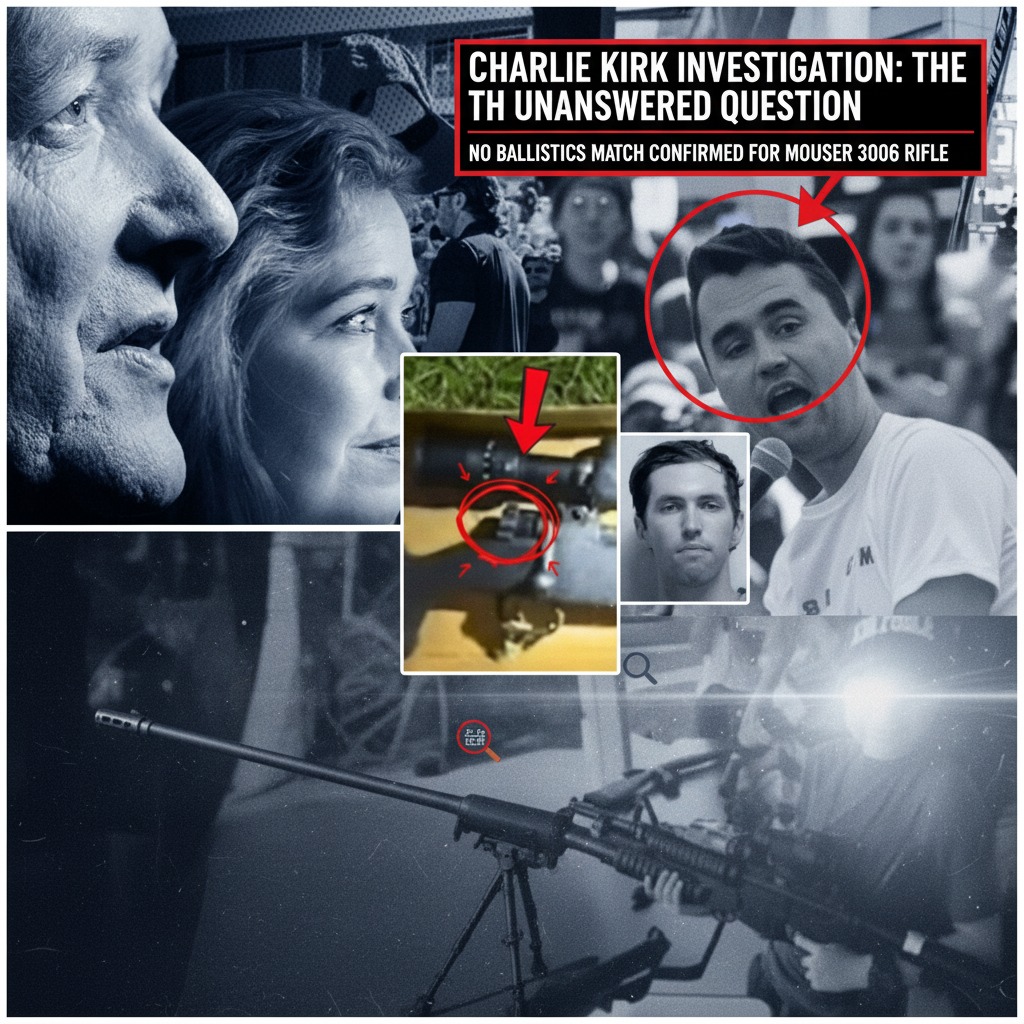Investigation into Charlie Kirk’s Death Faces Scrutiny Over Unconfirmed Forensic Evidence
In the ongoing investigation into the death of Charlie Kirk, public attention has increasingly focused on a critical piece of forensic evidence that remains unconfirmed by officials. While authorities have announced the recovery of a weapon believed to be connected to the case, there has been no official public statement confirming a ballistic match between that firearm and the projectile that caused Kirk’s death, leaving a significant question at the center of the official narrative.
The foundational facts of the case were established early on. Following the incident, a doctor officially confirmed that Kirk’s death was the result of a projectile wound. This medical finding provided investigators with their primary piece of physical evidence—the projectile itself, recovered during the medical examination. In any homicide investigation involving a firearm, such a projectile is paramount, as it carries the potential for a direct and scientifically verifiable link to a specific weapon.

Shortly after this determination, law enforcement officials announced a development: the discovery of a Mouser 3006 bolt-action rifle. The firearm was reportedly found abandoned in a wooded area in the vicinity of Utah Valley University. The recovery of the rifle was presented as a significant step forward in the investigation, providing a tangible focus for both law enforcement and the public.
However, the discovery of a firearm and its definitive connection to a crime are two separate stages of an investigation, bridged by the precise science of forensic ballistics. This discipline is built on the principle that every firearm barrel possesses microscopic imperfections and grooves—a result of the manufacturing process—known as rifling. As a bullet travels down the barrel, these unique markings are engraved onto its surface. These striations act as a form of mechanical fingerprint, unique to that specific gun.
Standard procedure in a case like this involves forensic examiners comparing the markings on the projectile recovered from the victim with new projectiles test-fired from the recovered weapon. Using a comparison microscope, analysts can determine with a high degree of certainty whether the projectile from the crime scene was fired from that specific gun. This match, or lack thereof, is often considered one of the most conclusive pieces of evidence in a shooting case.
It is the public silence on the results of this critical test that has become a point of contention. To date, neither the investigating agencies nor the district attorney’s office have issued a formal statement or released documentation confirming that the projectile from Charlie Kirk’s body has been successfully matched to the recovered Mouser 3006 rifle. Without this confirmed forensic link, the rifle’s role in the case remains circumstantial from a public standpoint.
This absence of information has led to growing scrutiny. In high-profile cases, transparency is often balanced against the need to protect the integrity of an ongoing investigation. Details may be withheld to avoid tipping off potential suspects or prejudicing a future jury pool. However, a confirmation of a core piece of physical evidence like a ballistics match is often seen as a foundational element that solidifies the direction of an investigation.
Legal experts and forensic science professionals note that while the process of ballistics matching is well-established, it requires meticulous work and can be subject to various challenges. The condition of the projectile, for instance, can affect the ability to find a clear match. If a bullet is significantly deformed upon impact, the surface striations may be damaged, making a conclusive comparison difficult or impossible. Even so, the results of such an analysis—whether conclusive, inconclusive, or negative—are typically documented in official lab reports that become central to any subsequent legal proceedings.
The current information vacuum places the narrative of the case in a state of ambiguity. While the public has been made aware of two key elements—a victim who died from a projectile and a recovered rifle—the evidentiary bridge that scientifically connects them has not been shared. This has left observers to ponder the status of the investigation and the strength of the evidence collected so far. Public trust in the judicial process often hinges on the clear presentation of verifiable facts, and a confirmed ballistics report is one of the cornerstones of such factual evidence. As the investigation proceeds, the confirmation of this single forensic detail remains one of the most anticipated and crucial developments.

